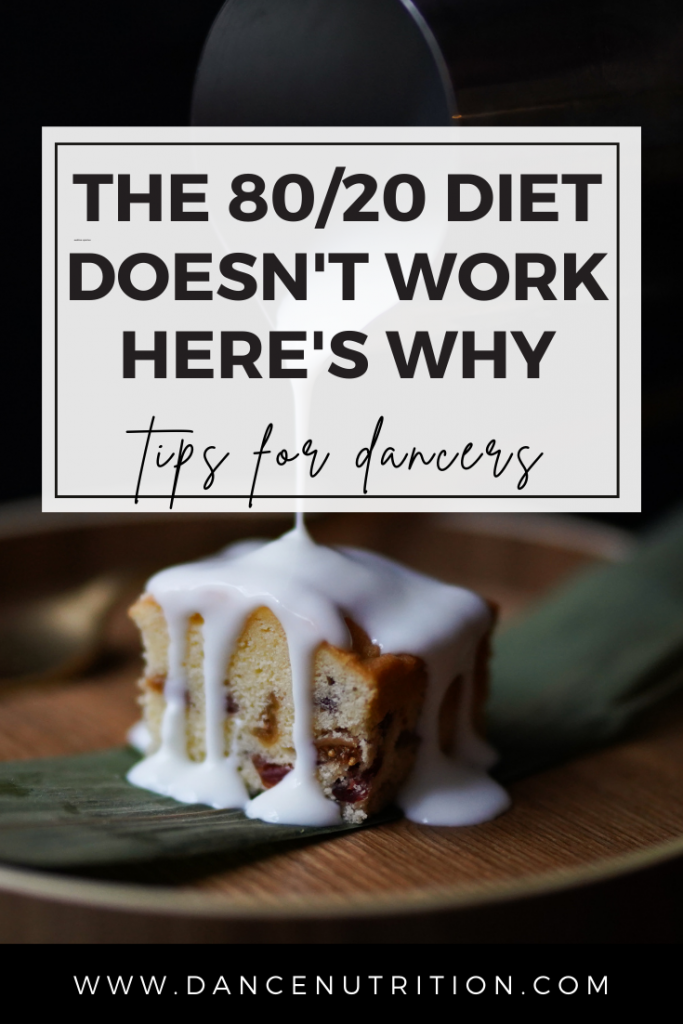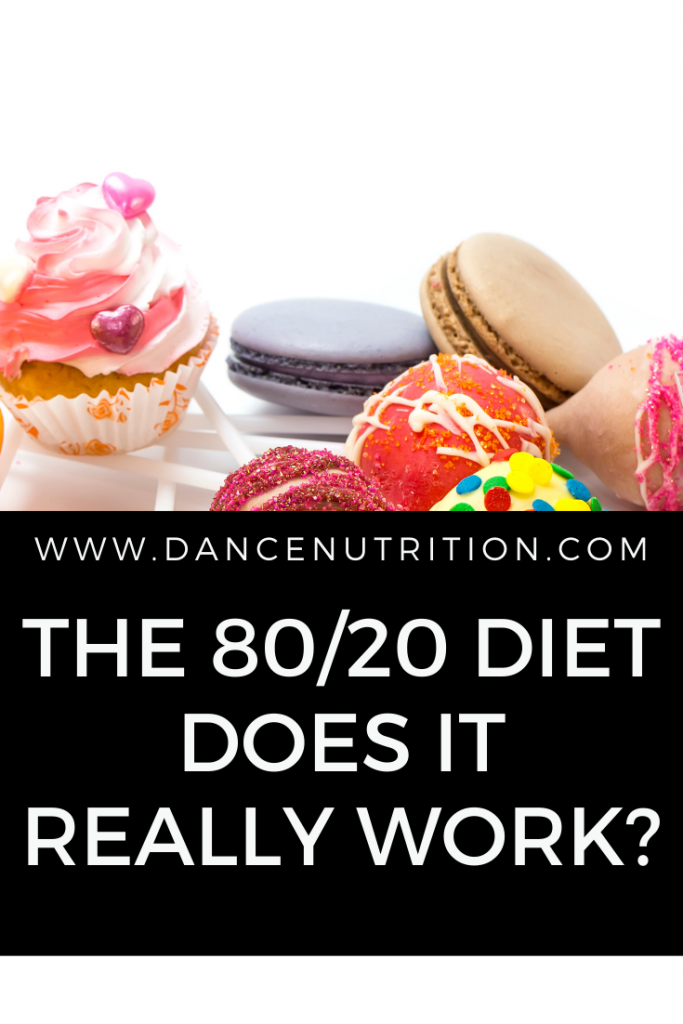Most dancers today don’t walk around saying they’re “on a diet.” Instead, phrases like wellness, balance, or clean eating have taken over. These words sound softer, but many times, they’re just diet culture in disguise. (I’ve written more about that— click here for tips on how dancers can spot diet culture even when it’s hiding under the trickiest of guises.)
One common example? The 80/20 diet rule.
What’s the 80/20 Diet Rule?
The idea is simple: eat “healthy” 80% of the time, and save the remaining 20% for “unhealthy” foods. The theory is that by filling your plate mostly with foods deemed “clean,” you’ll leave space for treats without guilt.
At first glance, this sounds like a non-diet approach because, technically, all foods fit into the equation. For dancers looking for structure, it can feel like a safe middle ground between rigid dieting and complete freedom.
But here’s the catch: this mindset is not as balanced— or sustainable— as it seems.
Why I Don’t Recommend the 80/20 Rule
As both a dancer and a dietitian for dancers, I used to believe in the 80/20 rule. Compared to the vague “just eat in moderation” advice, it felt clearer and more practical.
But in real life, I noticed something troubling. Instead of helping me relax around food, it fueled the very patterns I wanted to avoid: guilt, restriction, and the infamous “cheat day” mentality.
Here’s why it often backfires:
The Problems with the 80/20 Rule
- It reinforces food labels.
The rule automatically divides food into “good” and “bad.” Even if the intention is balance, the underlying message is that some foods deserve 80% of your time, while others only get 20%. That hierarchy plants seeds of guilt and shame. - It encourages scarcity.
When foods are allowed only in a set percentage, they become more desirable. Psychologists call this the scarcity effect— the less available something feels, the more you want it. - It fuels the “all-or-nothing” cycle.
Maybe you’ve experienced this: you dip into your 20% “fun food” category and suddenly think, “I’ve blown it. I’ll just start fresh tomorrow.” This is the “throw in the towel” effect, and it often leads to eating more of the so-called “off-limits” food— not because you’re undisciplined, but because your brain is rebelling against restriction. - It’s not true flexibility.
Research shows that dieters— anyone setting limits on what, when, or how much they eat— tend to overeat once those limits are lifted. The 80/20 rule, even with its promise of flexibility, is still a diet rule. And like most diet rules, it isn’t built to last.
A Better Path: Food Without Percentages
Dismantling food rules like the 80/20 rule is hard, especially in a wellness culture that disguises diets with words like “clean” or “wholesome.” But here’s the truth: if you find yourself swinging between feeling in control and out of control around certain foods, that’s a red flag that your eating patterns may not be sustainable.
Instead of percentages, try this:
- Get curious. Start journaling! Not calories, but reflections. Note how different foods make you feel physically (energy, fullness), mentally (focus, satisfaction), and emotionally (joy, stress).
- Give yourself permission. Those “20%” foods? Allow them whenever you want, not just in a restricted slice of the week. This unconditional permission may feel scary at first, but it’s the key to calming cravings over time.
- Use nutrition as a tool, not a rule. Nutrition information can guide choices— like eating enough protein to fuel class or balancing carbs and fats for stamina— but it shouldn’t become obsessive math. Click here to learn more about this.
With practice, you’ll build trust in your body. You’ll learn that you can enjoy dessert on a Tuesday without waiting for a “cheat day,” and you can fuel with nourishing meals without needing to earn or balance them with a percentage system.
Key Takeaways
The 80/20 diet rule may sound like balance, but it’s just another food rule, and food rules rarely hold up for dancers with demanding schedules, performance pressures, and real cravings. True balance comes from flexibility and self-trust without numbers attached. This is exactly the goal of The Healthy Dancer®, and to kickstart your journey, begin with my free trial.


.


